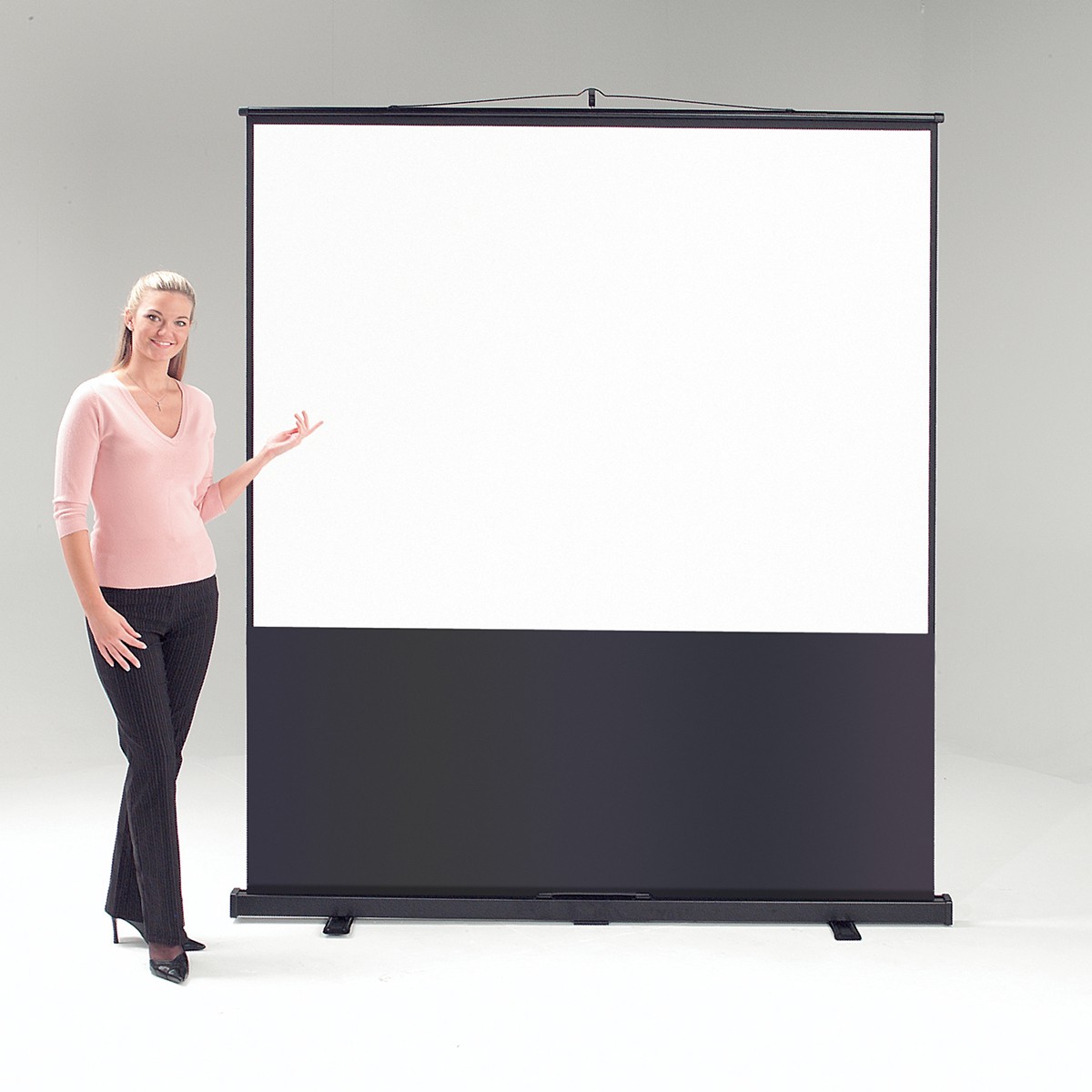Ever since everyday business began taking place on laptops and notepads, the role of the projector has been essential.
It’s simply the fastest way to share information with colleagues and they’re just as essential in the education sector too, with teachers sharing web-pages, videos and bespoke presentations with their class with exceptional ease.
Projectors, however, are useless without a projector screen to display images on. For some of our customers, that’s where the problem starts.
You see, projector screens come in all manner of shapes, sizes and specifications. In fact, you’ll find that every projector screen has its own set of features which make them suitable – or not – for your business. But how do you know which is right for you? In this guide, we’ll make choosing a projector screen easy by breaking down the common terms you’ll see as you browse our range.
Let’s get started.
- 4:3 – 4:3 refers to the aspect ratio of the screen itself. Your projector will either project in this or in 16:9. 4:3 screens are slightly wider than they are tall and more accurately replicate the experience of using a traditional computer monitor. This makes them perfect for presentations, text documents or any data-based application.
- 16:9 – 16:9 is the other commonly found aspect ratio for projector screens. These screens are much wider than they are tall and are typically used for broadcasting media rather than data. It’s the same aspect ratio of most televisions.
- Fixed Frame Projector Screen – Fixed frame projector screens are exactly what you might imagine them to be – fixed. These projector screens are affixed to your wall and remain there until you uninstall them, somewhat like a TV that’s turned off. They take up permanent space on your wall, so if you’re using your projector in the same space often, they can be an excellent option
- Tripod Projector Screen – Tripod projector screens are portable projector screens which fold up when not in use. With a sturdy base, they can turn any room into one suitable for a projector.
- Pull Down Projector Screen – Pull down projector screens are affixed to the wall in a similar way to fixed frame projector screens, but roll up when not in use. So, when retracted they take up little space on your wall. These projector screens are available in manual and electronic versions.
- Rear Projector Screen – The vast majority of projector screens are designed with a front-mounted projector in mind. As such, if you attempt to use them by projecting from behind them, it simply won’t work. A rear projector screen is specifically designed for use cases where the projector is located behind the screen.
- Tabletop Projector Screen – For times when space is at a premium, tabletop projector screens are ideal. They’re small and feature no stand, instead designed to be stood on a table and projected on to.
And with that, you now know absolutely everything there is to know about projector screens. Got any further questions? Don’t be afraid to get in touch with a member of our team.



